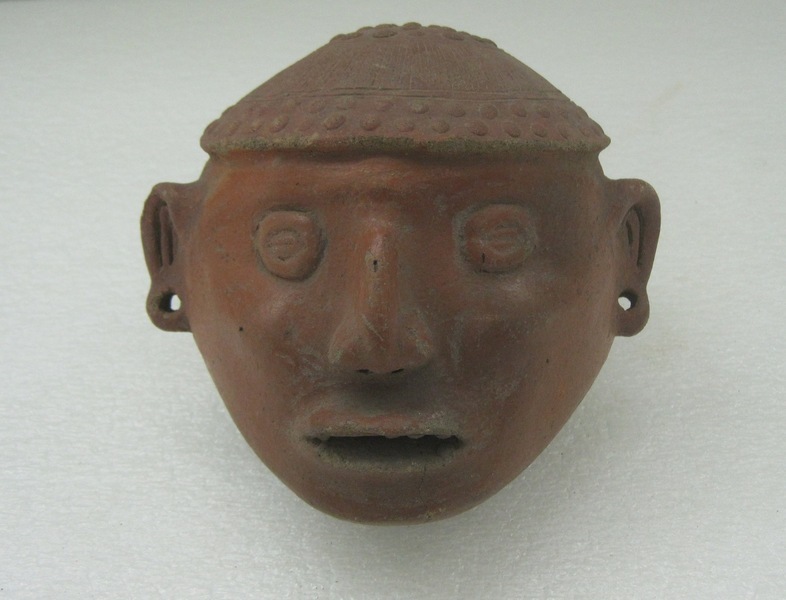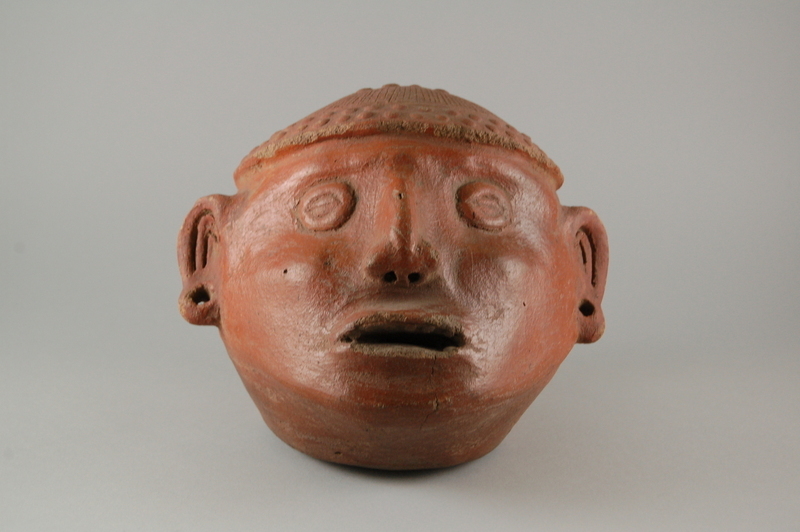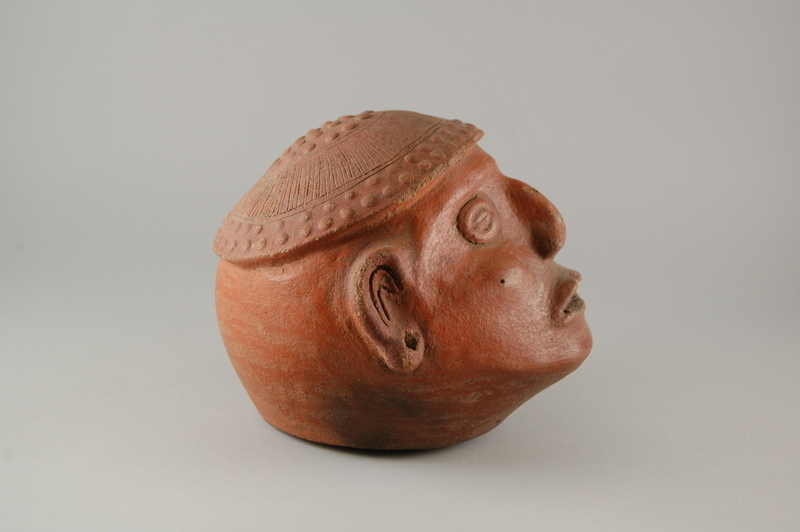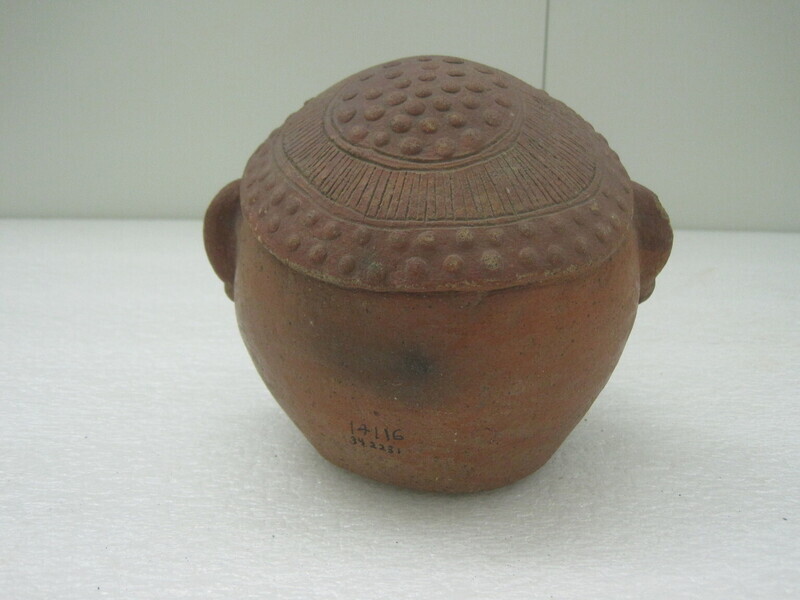Trophy Head Item Number: 34.2231 from the Brooklyn Museum




Description
Hollow, redware, thick-walled trophy head with modeled ears, eyes, nose, mouth and chin. The ears are perforated at the lobes; the nose has two holes for the nostrils, and the open mouth has five remaining teeth. At the top of the head is a modeled cap decorated with raised dots in the center and around the perimeter, with incised lines between the two. Condition: good; several teeth are missing and there are small chips and abrasions around the eyes, nose, cheeks, and mouth.
Credit Line
Alfred W. Jenkins Fund
Label
Abundant in pre-Columbian Costa Rican art and iconography, disembodied human heads are often depicted as trophies held in the hands of human figures or simply as sculptures and head-shaped vessels. The large hole at the bottom of this ceramic head refers to decapitation. Scholars suggest that while trophy heads had a military context as spoils of war, their prominence also indicates a ritual dimension, an interpretation that is supported by a nineteenth-century scientist’s account of the taking of heads by Bribri and Teribe tribes. Among both groups, who are descendants of Costa Rica’s ancient people, high priests organized war parties to decapitate enemies and thereby eliminate sources of witchcraft and sorcery.
Las cabezas humanas separadas del cuerpo abundan en el arte e iconografía precolombina de Costa Rica, y con frecuencia se representan como trofeos en las manos de figuras humanas o simplemente como esculturas y vasijas en forma de cabezas. El gran agujero en la base de esta pieza cerámica alude a la decapitación. Académicos sugieren que si bien las cabezas trofeo tenían una connotación militar como botín de guerra, su importancia sugiere también una dimensión ritual, interpretación que se sostiene por el reporte hecho por un científico en el siglo diecinueve, de la toma de cabezas por las tribus Bribi y Teribe. En ambos grupos, los cuales descienden de los antiguos habitantes de Costa Rica, los sumos sacerdotes organizaban partidas de guerra para decapitar enemigos y así eliminar fuentes de brujería y hechicería.
Item History
- Made between 500 and 1000
What
Who
- Culture
- Central Caribbean
Where
- Holding Institution
- Brooklyn Museum
When
- Creation Date
- between 500 and 1000
Other
- Location
- Arts of the Americas Galleries, 5th Floor
- Classification
- Sculpture